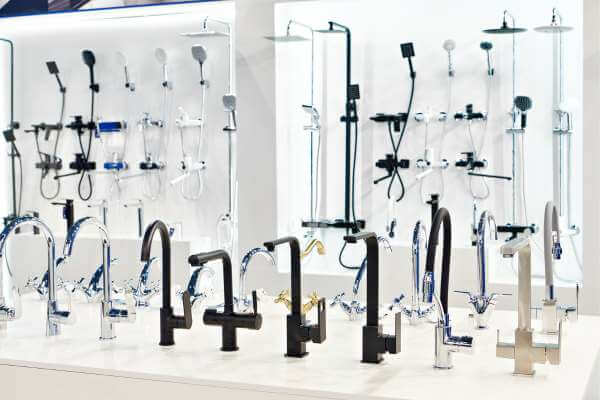Winter can be harsh on your plumbing system, especially if you live in an area where temperatures drop below freezing. Frozen pipes can cause serious damage to your home and your wallet, as they can burst and flood your property. To prevent that from happening, it is advised to let faucets drip constantly. However, people ask me how many faucets should I let drip to prevent freezing. In this article, I will answer this question and provide some tips on how to protect your pipes from freezing.
How Many Faucets Should I Let Drip To Prevent Freezing?
The answer to this question depends on the layout of your house and the location of your pipes. Generally speaking, you will need at least one faucet to drip. This faucet should be far from the source line which is letting water into your house. However, if the house supply line extends to multiple sections, open a tap in each section.
The best way to keep pipes from freezing is to have all of your faucets on an exterior wall dripping. This will keep a tiny amount of water running through your pipes which will prevent them from freezing. At the very least, make sure to drip the faucet that is furthest from the water connection to your house. Aim for 5–10 drops per minute.
Why You Should Let Your Faucets Drip
There are several benefits of letting your faucets drip during cold weather. Here are some of them:
- Prevents pipes from freezing and potentially bursting: When pipes freeze during extremely cold temperatures, the water inside expands by an additional 9% in volume, which can cause pipes to burst. Allowing your faucet to drip is one way to help mitigate this, as it keeps the water in your pipes from becoming stagnant.
- Helps maintain water flow through the pipes: Keeping your water flowing in cold temperatures is important as it helps reduce the risk of blockage from frozen water. Once this occurs, it can be problematic trying to successfully locate and remedy this blockage to restore water function.
- Reduces pressure buildup in the pipes: Allowing your faucet to drip during cold weather can help to prevent too much pressure from accumulating in your pipes caused by the presence of ice. Even with a small flow of water, in extreme temperatures you are still likely to see some level of freezing occur. By allowing a steady stream of water flow, you can help keep that pressure at a manageable level.
- Provides a small amount of heat to the pipes: When the temperature outside a home drops to sub-zero temperatures, pipes in your system become susceptible to freezing. However, if you allow a faucet to drip, it can generate enough heat to prevent this from happening. This is because often the water is warmer than the outside ground temperature. Friction generated from within the pipes can also have a minor thermostatic advantage.
- Can save you money in the long run by avoiding costly repairs and water damage: Not only does a burst pipe come with an expensive price tag due to potential water wastage, but it can also cause a great deal of damage to your home. When water leaks into walls it can structurally compromise your home, as well as cause irreversible damage to your soft furnishings. This can prove costly to fix and replace.
How to Properly Drip a Water Faucet
To ensure that you are dripping your faucets correctly and effectively, follow these steps:
- Run the cold water faucet: You don’t need to run hot water, as it will waste energy and money. Cold water is sufficient for preventing freezing.
- Adjust the flow rate: You need just a trickle of water to drip so that water is moving through the pipes consistently. You can use a measuring cup or a timer to check how much water you are using per minute.
- Choose the right faucet/s: If you know the farthest faucet from your water meter, you can run only that faucet and it will draw water all the way through the house. However, if you have multiple sections or branches in your plumbing system, you may need to open more than one faucet. Ideally, you should choose faucets that are on exterior walls or near uninsulated spaces.
- Open the cabinet doors: Opening the cabinets under your sinks can help expose the pipes to warmer air from inside your home. This can help prevent them from freezing, especially in the kitchen and bathrooms.
- Insulate your pipes: One of the best ways to protect your pipes from freezing is to insulate them with foam or fiberglass sleeves. This can help keep them warm and reduce heat loss. You should pay special attention to pipes that are in unheated areas such as garages, crawl spaces, and attics.
How Long Should You Let Your Faucets Drip
You should let your faucets drip until temperatures are consistently above freezing. This means checking the weather forecast regularly and adjusting your faucets accordingly. If you’re going away for a long time during winter, you may want to shut off the main water valve.
Common FAQ
Does One Dripping Faucet Really Prevent Frozen Pipes?
The constant drip of a faucet relieves pressure in the pipes and keeps water flowing, which can prevent pipes from bursting due to pressure build-up. However, extreme temperatures can still cause water to freeze even while it is flowing. That’s why it’s important to take additional measures to prevent frozen pipes, such as insulating pipes and keeping the temperature in your home above freezing. Therefore, while letting one faucet drip can help prevent frozen pipes, it should not be relied upon as the sole method of prevention.
At What Temperature Do House Pipes Freeze?
House pipes can freeze at a temperature of 20 degrees Fahrenheit or lower, especially if the pipes are exposed to cold air for an extended period of time. Pipes closest to an exterior-facing wall, an attic, or windows are more vulnerable to freezing. Additionally, if the outside temperature is below 32 degrees Fahrenheit and your pipes are unprotected, your chances for a frozen pipe increase. It is important to take preventative measures such as insulating pipes and keeping the temperature in your home above freezing to avoid frozen pipes.
Will house pipes unfreeze on their own?
House pipes that are frozen can potentially unfreeze on their own, but it is not a guaranteed solution. As the temperature in your home rises, the frozen water inside the pipes can thaw and begin to flow again. However, if the pipes are severely frozen or if there is a blockage in the pipes, they may not unfreeze on their own and could potentially burst. It is important to take action to thaw frozen pipes as soon as possible to prevent further damage. You can use methods such as applying heat with a hair dryer or heating tape. If the pipes unfreeze you should call a professional plumber to safely thaw the pipes.
Conclusion
Letting your faucets drip during cold weather is a simple and effective way to prevent frozen pipes and avoid costly damage. However, you should know how many faucets to drip and how to do it properly for optimal results. By following the tips in this article, you can protect your plumbing system and save money in the long run.


 Hi, my name is Debra Klein and I love modern kitchen designs! As a product reviewer, it’s my mission to help homeowners choose the right modern kitchen accessories for their homes. I want to give them the best solution possible so they can make the best decision for their needs. Thanks for reading!
Hi, my name is Debra Klein and I love modern kitchen designs! As a product reviewer, it’s my mission to help homeowners choose the right modern kitchen accessories for their homes. I want to give them the best solution possible so they can make the best decision for their needs. Thanks for reading!




